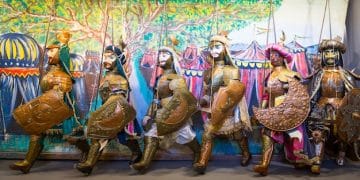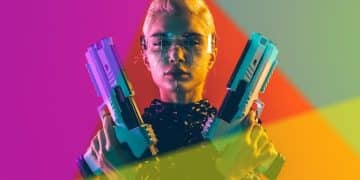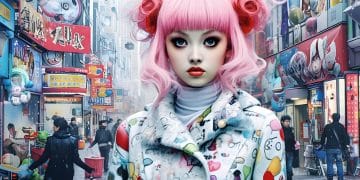The Evolution of Cosplay: From Comic-Con to High Fashion in the US
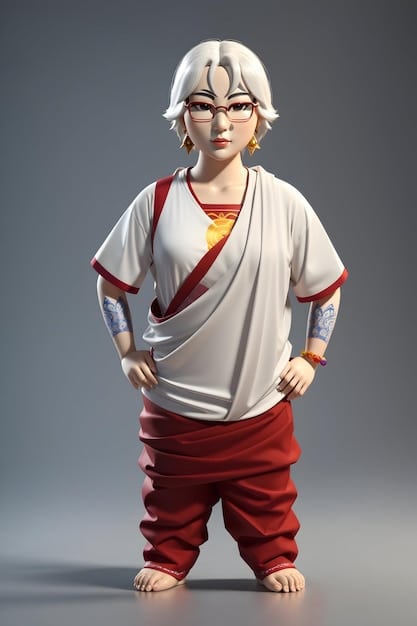
The evolution of cosplay in the US showcases a remarkable journey from niche comic conventions to mainstream high fashion, influencing design, performance art, and popular culture.
The vibrant world of cosplay, short for “costume play,” has undergone a fascinating transformation in the United States. What began as a passionate hobby at comic conventions has blossomed into a recognized art form, influencing high fashion and captivating audiences worldwide. Join us as we explore the evolution of cosplay: from Comic-Con to high fashion in the US.
The humble beginnings: Cosplay at Comic-Con
Cosplay’s roots are firmly planted in the fertile ground of American comic book and science fiction conventions. These events provided a space for fans to express their love for characters and stories through elaborate, homemade costumes.
Early pioneers of cosplay
The earliest forms of cosplay can be traced back to science fiction fandom in the late 1930s and 1940s. Forrest J Ackerman, a science fiction writer and editor, is often credited with wearing one of the first documented science fiction costumes to the 1939 World Science Convention in New York.
The rise of Comic-Con and cosplay
As Comic-Con grew in popularity, so did the practice of cosplay. Attendees would spend countless hours creating costumes of their favorite characters, showcasing their craftsmanship and dedication. Comic-Con became a haven for cosplayers, a place where they could connect with like-minded fans and celebrate their shared passion.
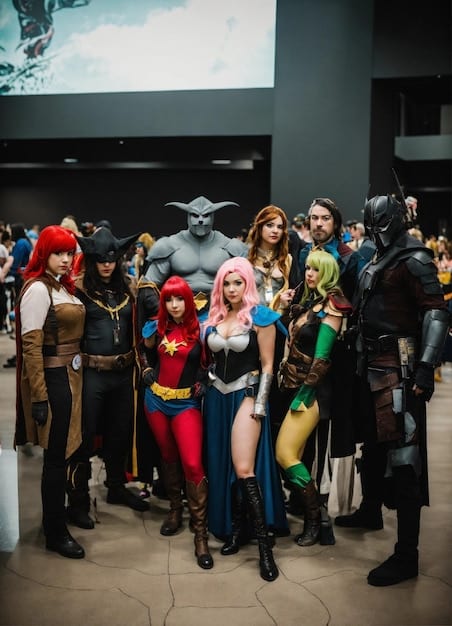
- The focus was on replicating characters from comic books, movies, and TV shows.
- Cosplay was largely a grassroots movement, driven by fans’ creativity and resourcefulness.
- The costumes were often homemade, using affordable materials and techniques.
- Cosplay was a form of self-expression and a way to connect with other fans.
The early days of cosplay at Comic-Con laid the foundation for the vibrant and diverse cosplay community we see today. It was a time of experimentation, creativity, and pure, unadulterated fandom.
The internet age: Cosplay goes global
The advent of the internet and social media platforms propelled cosplay into the global spotlight. Cosplayers could now share their work with a wider audience, connect with other cosplayers around the world, and learn new techniques and skills.
Online communities and forums
Websites like DeviantArt, Cosplay.com, and WorldCosplay.net provided platforms for cosplayers to showcase their costumes, share tutorials, and participate in online discussions. These online communities fostered a sense of camaraderie and collaboration, allowing cosplayers to learn from each other and improve their craft.
The impact of social media
Social media platforms like Instagram, Facebook, and Twitter further amplified the reach of cosplay. Cosplayers could now reach millions of followers with their photos and videos, building their personal brands and attracting sponsorships. Social media also provided a space for cosplayers to receive feedback and recognition for their work.
Professionalization of cosplay
As cosplay gained popularity, some cosplayers began to turn their hobby into a profession. They started accepting commissions for costumes, attending conventions as featured guests, and even launching their own businesses. The professionalization of cosplay has raised questions about intellectual property rights and the commercialization of fan culture.
The internet age revolutionized cosplay, making it more accessible, collaborative, and professional. Cosplayers could now connect with a global audience, learn new skills, and even turn their passion into a career.
Cosplay as an art form: Craftsmanship and performance
Beyond replicating costumes, cosplay has evolved into a complex art form blending craftsmanship and performance. Attention to detail, material selection, and character embodiment are essential aspects.
The importance of craftsmanship
Cosplayers invest significant time and effort in creating accurate and visually stunning costumes. They use a variety of techniques, including sewing, prop making, and special effects makeup, to bring their characters to life. Craftsmanship is a key element of cosplay, showcasing cosplayers’ artistic skills and dedication.
Performance and character embodiment
Cosplay is not just about wearing a costume; it’s about embodying the character. Cosplayers study their characters’ mannerisms, voices, and personalities to create a convincing portrayal. Performance is an integral part of cosplay, adding depth and dimension to the characters.
Cosplay competitions and judging criteria
Cosplay competitions have become a popular feature of conventions, providing a platform for cosplayers to showcase their skills and creativity. Judging criteria typically include craftsmanship, accuracy, performance, and originality. Winning a cosplay competition can bring recognition, prizes, and even sponsorships.
- Craftsmanship: Assessing the quality of construction, detailing, and material choices.
- Accuracy: Evaluating the faithfulness to the original character design.
- Performance: Considering the cosplayer’s portrayal and embodiment of the character.
- Originality: Recognizing unique interpretations or creative adaptations of characters.
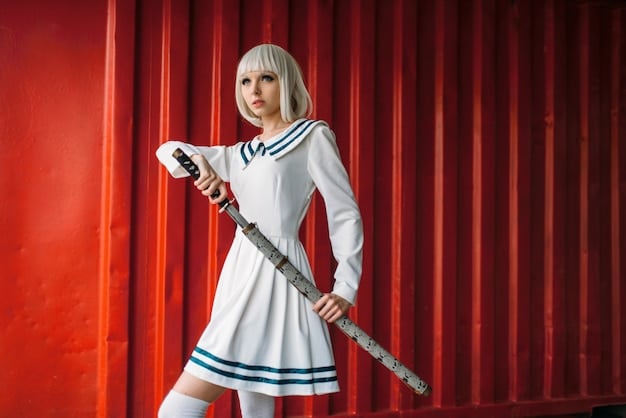
As an art form, cosplay challenges participants to combine technical skills with creative interpretation. It fosters personal expression and collaborative spirit within its community.
Cosplay and identity: Self-expression and community
Cosplay can be a powerful form of self-expression. It allows individuals to explore different facets of their identity, connect with others who share their interests, and build a supportive community.
Cosplay as a form of self-discovery
Cosplaying as different characters can allow individuals to explore aspects of their personality that they may not otherwise express. It can be a way to experiment with different genders, identities, and roles, fostering self-discovery and personal growth.
Building a supportive community
The cosplay community is generally known for being welcoming and supportive. Cosplayers often help each other with costume construction, offer advice and encouragement, and provide a safe space for self-expression. This sense of community is one of the most rewarding aspects of cosplay.
Addressing issues of inclusivity and representation
Like any community, the cosplay community has faced challenges related to inclusivity and representation. There have been discussions about issues such as racebending (cosplaying a character of a different race), body shaming, and the marginalization of certain groups. Efforts are being made to create a more inclusive and welcoming environment for all cosplayers.
Cosplay goes beyond a simple hobby and ventures into questions of identity and connection. Participants often describe how it has helped them gain confidence and belonging.
Cosplay in high fashion: Inspiration and collaboration
The influence of cosplay is now evident in high fashion, where designers draw inspiration from its aesthetics and collaborate with cosplayers to create avant-garde designs.
Designers drawing inspiration from cosplay
High fashion designers have increasingly turned to cosplay for inspiration, incorporating elements such as bold colors, intricate details, and dramatic silhouettes into their collections. This cross-pollination of ideas has led to innovative and visually stunning designs.
Collaborations between designers and cosplayers
Some designers have even collaborated directly with cosplayers, recognizing their expertise in costume construction and character embodiment. These collaborations have resulted in unique and boundary-pushing fashion pieces that blur the lines between cosplay and high fashion.
The impact of cosplay on runway shows
Cosplay’s influence can also be seen in runway shows, where models are styled to resemble characters from popular culture. This adds a theatrical and fantastical element to the shows, making them more engaging and memorable.
The crossover between cosplay and high fashion has opened new avenues for design innovation. Both realms benefit from the exchange of ideas, techniques, and creative philosophies.
The future of cosplay: Technology and innovation
As technology continues to advance, it will undoubtedly play an increasingly important role in cosplay. We can expect to see more innovative uses of 3D printing, augmented reality, and other technologies in costume construction and performance.
The use of 3D printing in costume construction
3D printing has already become a popular tool for cosplayers, allowing them to create intricate and complex props and costume pieces. As 3D printing technology becomes more affordable and accessible, we can expect to see even more elaborate and detailed costumes.
Augmented reality and interactive costumes
Augmented reality (AR) could also revolutionize cosplay, allowing cosplayers to create interactive costumes that respond to their environment or the actions of the wearer. Imagine a costume that changes color based on the wearer’s mood or projects holographic images around them.
The rise of e-cosplay and virtual conventions
With the rise of virtual reality (VR) and online gaming, e-cosplay is becoming increasingly popular. E-cosplay involves creating digital avatars that resemble fictional characters and interacting with other cosplayers in virtual spaces. Virtual conventions are also becoming more common, providing a safe and accessible way for cosplayers to connect and share their work.
The fusion of technology and cosplay expands creative boundaries, unlocking new avenues for self-expression and community engagement. Advanced tools promise intricate costumes and immersive experiences.
| Key Point | Brief Description |
|---|---|
| 🎭 Comic-Con Beginnings | Humble origins at conventions, showcasing homemade costumes and fan enthusiasm. |
| 🌐 Internet’s Impact | Global reach via online communities, social media, and professionalization. |
| 🎨 Art and Performance | Evolving into an art form with craftsmanship, character embodiment, and competitions. |
| 👠 High Fashion Influence | Inspiration for designers, collaborations with cosplayers, and runway show impacts. |
Frequently Asked Questions
▼
Cosplay, short for “costume play,” involves dressing up as characters from various fictional sources. It originated in the United States, particularly at science fiction and comic book conventions in the late 1930s.
▼
The internet allowed cosplayers to connect globally, share their work, learn new techniques, and build supportive communities. Social media platforms also helped cosplayers gain recognition and even turn their hobby into a profession.
▼
Key elements include craftsmanship (costume construction), accuracy (faithfulness to character design), performance (character embodiment), and originality (unique interpretations). These elements are often judged in cosplay competitions.
▼
High fashion designers have drawn inspiration from cosplay’s aesthetics, incorporating bold colors, intricate details, and dramatic silhouettes. Collaborations between designers and cosplayers have also resulted in innovative fashion pieces.
▼
Technology like 3D printing will enable the creation of more complex and detailed costumes. Augmented reality could lead to interactive costumes, and virtual reality will facilitate e-cosplay and virtual conventions.
Conclusion
From its humble origins at Comic-Con to its growing influence on high fashion, the evolution of cosplay in the US has been a remarkable journey. What started as a niche hobby has blossomed into a recognized art form, a powerful form of self-expression, and a vibrant global community. As technology continues to advance, the future of cosplay promises to be even more innovative and exciting.


